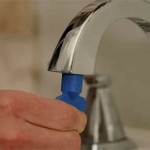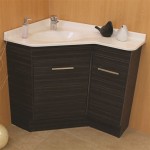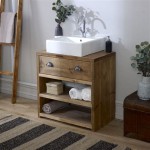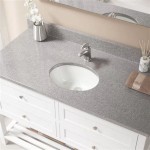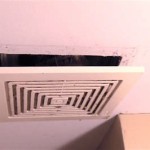Corner Sink Ideas for Optimizing Bathroom Space
Bathrooms, particularly in older homes or apartments, are often constrained in square footage. Maximizing space in these environments becomes paramount for comfort and functionality. The corner sink presents a compelling solution for bathrooms where space is limited or awkwardly shaped, offering an efficient way to incorporate essential plumbing without sacrificing valuable floor area. This article explores various corner sink designs, installation considerations, and aesthetic integration techniques to help homeowners and designers effectively utilize this space-saving fixture.
Understanding the Advantages of Corner Sinks
Corner sinks offer several distinct advantages, making them a practical choice for specific bathroom layouts. The most significant benefit is their efficacy in utilizing otherwise unproductive corner spaces. In small bathrooms, corners often remain unused due to difficulties in fitting standard rectangular or oval fixtures. A corner sink, designed explicitly for this purpose, instantly transforms a potentially wasted area into a functional washing station. This can free up considerable floor space, allowing for easier movement within the bathroom and creating a less cramped environment.
Beyond space saving, corner sinks can also improve the overall flow of a bathroom. By positioning the sink in a corner, it can naturally direct traffic flow around the fixture rather than through it. This is especially beneficial in narrow bathrooms where the sink might otherwise obstruct passage. Furthermore, corner sinks can create a more visually appealing and balanced aesthetic. Their unique shape can add a focal point to the room, breaking up the monotony of straight lines and right angles.
Accessibility can also be enhanced by strategic corner sink placement. Depending on the overall bathroom layout and the specific needs of the user, a corner sink can often be positioned to be more accessible than a traditionally placed sink. This can be particularly useful for individuals with mobility issues, as it allows for easier reach and maneuverability.
Exploring Different Corner Sink Designs and Styles
The market offers a wide array of corner sink designs, catering to diverse stylistic preferences and functional requirements. Each design incorporates specific features that influence its suitability for different bathroom aesthetics and user needs.
Wall-Mounted Corner Sinks: This type of corner sink is directly attached to the wall, leaving the floor underneath completely open. Wall-mounted sinks are ideal for smaller bathrooms as they maximize the perception of space and simplify cleaning. They offer a minimalist aesthetic and can be installed at a custom height, accommodating individual user preferences. However, installation requires careful planning to ensure adequate wall support and proper plumbing connections.
Pedestal Corner Sinks: Pedestal corner sinks consist of a basin supported by a freestanding pedestal. This design provides a classic and elegant look, suitable for traditional bathroom styles. While it offers some concealment for the plumbing, it doesn't provide any storage space. Pedestal sinks are generally easier to install than wall-mounted sinks as they rely on the floor for support.
Corner Sinks with Cabinets: These corner sinks incorporate a vanity cabinet beneath the basin, providing valuable storage space for toiletries and cleaning supplies. This is a practical choice for bathrooms where storage is limited. Corner sink cabinets come in various styles and finishes, allowing for seamless integration with the overall bathroom décor. However, the cabinet can take up more visual space compared to wall-mounted or pedestal sinks and might not be suitable for extremely small bathrooms.
Vessel Corner Sinks: Vessel sinks sit on top of a countertop rather than being recessed into it. When combined with a corner-shaped countertop, this design creates a modern and stylish focal point. Vessel sinks offer a wide range of shapes, materials, and finishes, providing ample design flexibility. They typically require a taller faucet and careful consideration of the countertop height to ensure comfortable use.
When selecting the style, it is also important to consider the material used. Common materials include porcelain, ceramic, stone, and stainless steel. Porcelain and ceramic are durable, easy to clean, and relatively affordable. Stone sinks offer a luxurious look but require more maintenance. Stainless steel sinks are durable and hygienic, making them a good choice for contemporary bathrooms.
Installation Considerations for Corner Sinks
Proper installation is crucial for the long-term functionality and aesthetic appeal of a corner sink. The installation process can vary depending on the type of sink and the existing plumbing configuration. While some homeowners may be comfortable with DIY installation, professional plumbing services are often recommended to ensure correct and safe installation, preventing potential leaks or damage to the plumbing system.
Plumbing Connections: Before installing the corner sink, it is essential to verify the location of the water supply lines and drainpipe. In some cases, adjustments may be required to accommodate the sink's specific dimensions and plumbing requirements. Hiring a licensed plumber to assess the existing plumbing and make any necessary modifications is highly recommended. Ensure that the drainpipe has sufficient slope to facilitate proper drainage and prevent clogs. The water supply lines should be equipped with shut-off valves for easy maintenance and repairs.
Wall Support (for Wall-Mounted Sinks): Wall-mounted corner sinks require adequate wall support to bear the weight of the sink and the water it contains. It is crucial to locate the wall studs and securely attach the sink to them using appropriate hardware. If the wall is not strong enough, reinforcement may be necessary to prevent the sink from pulling away from the wall. It's possible to reinforce the wall with extra blocking between studs.
Cabinet and Countertop Installation (for Corner Sinks with Cabinets or Vessel Sinks): When installing a corner sink with a cabinet, ensure that the cabinet is level and securely fastened to the wall and floor. Countertops for vessel sinks should be cut to the precise dimensions of the corner and properly sealed to prevent water damage. The height of the countertop should be carefully considered to ensure comfortable use of the vessel sink.
Sealing and Caulking: After the plumbing connections are in place and the sink is securely mounted, it is important to seal all gaps and joints with waterproof caulk. This will prevent water from seeping behind the sink and causing damage to the walls or flooring. Pay particular attention to the area where the sink meets the wall and around the drainpipe.
Accessibility Considerations: If the corner sink is intended for use by individuals with mobility issues, consider installing it at a lower height and ensuring that there is adequate knee clearance underneath the sink. Lever-handled faucets are also a good choice for accessibility, as they are easier to operate than traditional knob-style faucets.
Prior to commencing with the installation, it is always advisable to consult the manufacturer's instructions and local building codes. This will ensure that the installation is performed correctly and in compliance with all applicable regulations. Seeking professional assistance from a qualified plumber or contractor will minimize the risk of errors and ensure a safe and successful installation.
Aesthetic Integration: Blending Corner Sinks with Bathroom Décor
The aesthetic integration of a corner sink is paramount to achieving a cohesive and visually appealing bathroom design. The sink should complement the overall style of the bathroom, reflecting the chosen color palette, materials, and architectural details. Consider aligning the sink's design elements with the other fixtures and accessories in the room. The faucet, lighting, and hardware should all work together to create a harmonious and balanced aesthetic.
Color Coordination: Choose a corner sink color that complements the bathroom's color scheme. White is a classic and versatile choice that works well in most bathrooms. Neutral colors like beige and gray can also be excellent options. For a bolder look, consider a colored sink that adds a pop of personality to the room. Ensure that the color of the sink harmonizes with the wall paint, tile, and other fixtures.
Material Harmony: Select a sink material that complements the other materials used in the bathroom. If the bathroom features natural stone elements, a stone or stone-look sink can enhance the overall aesthetic. For contemporary bathrooms, stainless steel or glass sinks can create a sleek and modern look. Harmonizing the materials will create a sense of cohesion and enhance the overall visual appeal of the space.
Faucet Selection: The faucet style should complement the design of the corner sink and the overall bathroom aesthetic. For traditional bathrooms, a classic faucet with ornate details can be a good choice. For contemporary bathrooms, a sleek and minimalist faucet can create a modern look. Consider the finish of the faucet and ensure that it matches the other hardware in the bathroom, such as towel bars and light fixtures.
Lighting Considerations: Adequate lighting is essential for highlighting the corner sink and creating a functional and visually appealing space. Install task lighting above the sink to provide ample illumination for grooming and washing. Consider adding accent lighting to highlight the sink's design and create a more inviting atmosphere. A well-lit corner sink can serve as a focal point in the bathroom and enhance its overall aesthetic appeal.
Mirror Placement: Mirrors play a critical role in enhancing the functionality and aesthetics of a bathroom. Position a mirror above the corner sink to reflect light and create the illusion of more space. Choose a mirror style that complements the sink's design and the overall bathroom aesthetic. A large mirror can make a small bathroom feel more spacious and inviting.
By carefully considering these aesthetic integration techniques, homeowners and designers can seamlessly blend corner sinks into their bathroom décor, creating a functional and visually appealing space that maximizes square footage and enhances overall bathroom design.

Corner Bathroom Sinks Creating Space Saving Modern Design Top Inspiration House Designs

Corner Bathroom Vanity Ideas My Renovations

Bathroom Corner Sink Small Ideas Remodel On A Budget

30 Creative Ideas To Transform Boring Bathroom Corners

Corner Bathroom Vanity Ideas My Renovations

Corner Sink With Backsplash Powder Room Bathroom Vanity Beautiful Bathrooms

Corner Sink Design Ideas

Amazing Corner Vanity Ideas That You Will Find Useful

8 Stylish Ideas For Corner Cloakroom Basins From Basin

Corner Bathroom Vanity Ideas How To Transform Your Washroom Space Ramzi Beidas Posted On The Topic Linkedin
Related Posts
